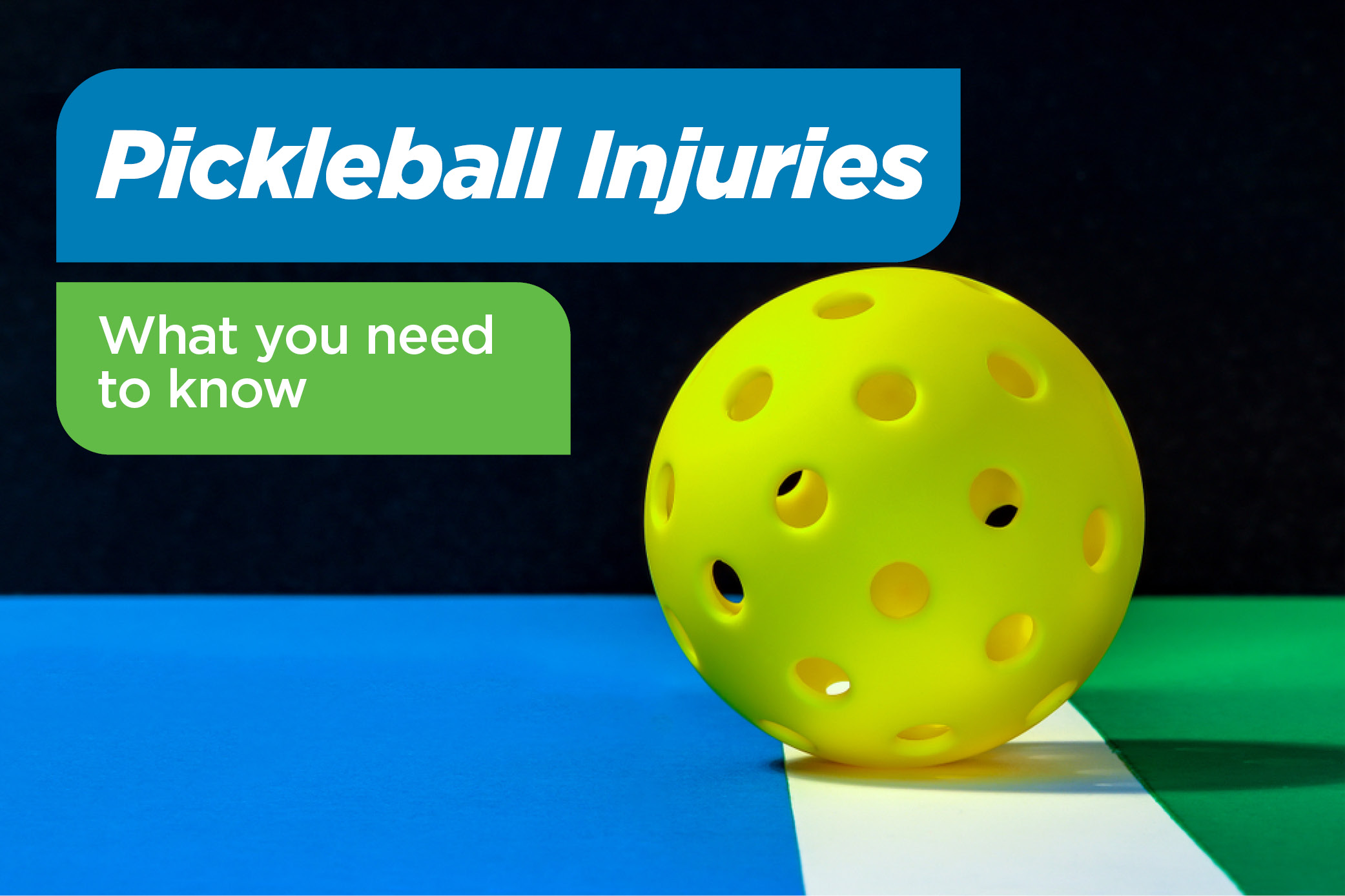Pickleball: Why Is This Low-Impact Sport Sending Older Adults to Their Doctor?
Exercise and NutritionPosted:

If you live near a pickleball court, you’ve probably heard it in the air: a steady stream of sharp popping noises. Thwock! Thwock! Thwock!
More than likely, you’re hearing about the fastest-growing sport in the country being played: pickleball. The sport offers older adults a great way to get some low-impact exercise that improves their overall health while they socialize with friends and neighbors.
But as the number of older adults playing pickleball has skyrocketed in recent years, so has that of players visiting the emergency room with injuries. Diana S. Young, a board-certified orthopedic surgeon with Lee Physician Group Orthopedics, discusses common pickleball-related injuries, how to minimize your risk and treatment options if symptoms persist.
Pickleball, invented in Washington state in 1965, mixes tennis, ping-pong and badminton on a playing surface the size of a doubles badminton court. More than 36.5 million people in the United States played the sport at least once in the past year, according to a January 2023 report by the Association of Pickleball Professionals.
Seniors, identified as players age 50 or older in the sport’s “senior category,” represent 1.4 million “core” participants who play at least eight times a year, according to the Sports & Fitness Industry Association. Sixty percent of players are 55 or older, and more than 33.7 percent are 65 or older.
Dr. Young says that although pickleball is considered a low-impact sport, it can still exact a physical toll, as evidenced by the growing number of patients who hobble into her practice for treatment and care.
“There’s a lot of quick stops and starts in pickleball, along with lunging and twisting movements,” she notes. “When you’re younger, these movements aren’t so much an issue. But in older adults, muscles aren’t as strong and flexible, and bones are more brittle, which can affect coordination, stability, and balance.”
Injuries and Prevention
Dr. Young says her practice treats many pickleball injuries, including most often calf strains and Achilles tendonitis. Other pickleball injuries include partial and complete ruptures of Achilles tendons, plantar fasciitis, ankle sprains, and various foot and ankle fractures. She’s also treated patients with lateral epicondylitis, commonly known as tennis elbow — now pickleball elbow.
In 2019, a report in the Journal of Emergency Medicine estimated about 19,000 pickleball injuries occur every year, with 90 percent of them affecting people aged 50 or older. Dr. Young says injuries such as calf strain and tendonitis are often treated with physical therapy/exercises.
“When it comes to complete Achilles tendon ruptures, surgery may be necessary,” she explains. “If there are any fractures that occur related to pickleball, such as ankle fractures (and this does happen at times), those too may be treated with surgery depending on the fracture type.”
Dr. Young says the best preventive approach to avoiding injury begins before you even set foot on the court.
“Some pickleball injuries may not be prevented 100 percent, but in general, being consistently active with a program that incorporates stretching and conditioning - is very helpful,” Dr. Young advises. “A lot of the more severe injuries that require surgery we’re seeing involve weekend warriors. These players typically are not active but then decide to play aggressively, and often without warming up.”
Dr. Young says that, as with any sport you play, you should be sure to loosen your body up, use proper equipment, wear good shoes that support your movements, and stay well hydrated.
“Also, stretch a lot,” she adds. “Stretch beforehand and afterward. Warm those muscles up!”
If you suffer a minor injury while playing pickleball, Dr. Young advises that you follow the R.I.C.E. method to reduce swelling, ease pain and speed healing.
RICE stands for:
- Rest: Avoiding use of the injured area.
- Ice: Applying ice packs or bags of frozen vegetables to the area without them touching the skin directly.
- Compression: Wrapping the injured area with an elastic bandage to provide support, reduce blood flow, and limit swelling.
- Elevation: Keeping the area raised above the level of the heart to reduce swelling.
If your condition doesn’t improve, Dr. Young notes, it may be a good idea to see your doctor for further assessment.
Southwest Florida's Premier Orthopedic Program
Lee Health's orthopedic specialists and surgeons incorporate national best practices and personalized care to help you during all phases of treatment and recovery.
With more surgery and rehab choices than any other Southwest Florida provider, Lee Health's orthopedic services cover injuries and conditions for all the body's muscles, bones, joints, and soft tissues. Call 239-343-9696 for more information or to make an appointment!
Pediatric Orthopedic Services
Our orthopedic specialists work with children and families to employ the best therapy, rehabilitation services, surgery, and other treatments – all with the kind of individual focus and compassion that makes you feel valued.
Areas of specialization include:
- Pediatric and adolescent spine abnormalities
- Limb deformity and limb length problems
- Congenital and acquired hand and foot disorders
- Pediatric and adolescent hip disorders
- Complex post-traumatic fraction problems
- Musculoskeletal infections and tumors
- Bone and joint treatment
- Sports medicine
Pediatric Spine Program
Golisano Children's Hospital of Southwest Florida has joined forces with Pediatric Orthopedics of SWFL to expand pediatric spine services in Southwest Florida. The pediatric spine program offers a comprehensive range of diagnostic testing and treatment plans for patients suffering from back and neck pain. Children no longer need to travel to Orlando, Tampa, or Miami for certain procedures and treatments.
From back injuries to spinal deformities, there are times when children need to have surgery. With brand-new technologies and workflows in place, we can make surgeries safer and more efficient. Learn more here!

